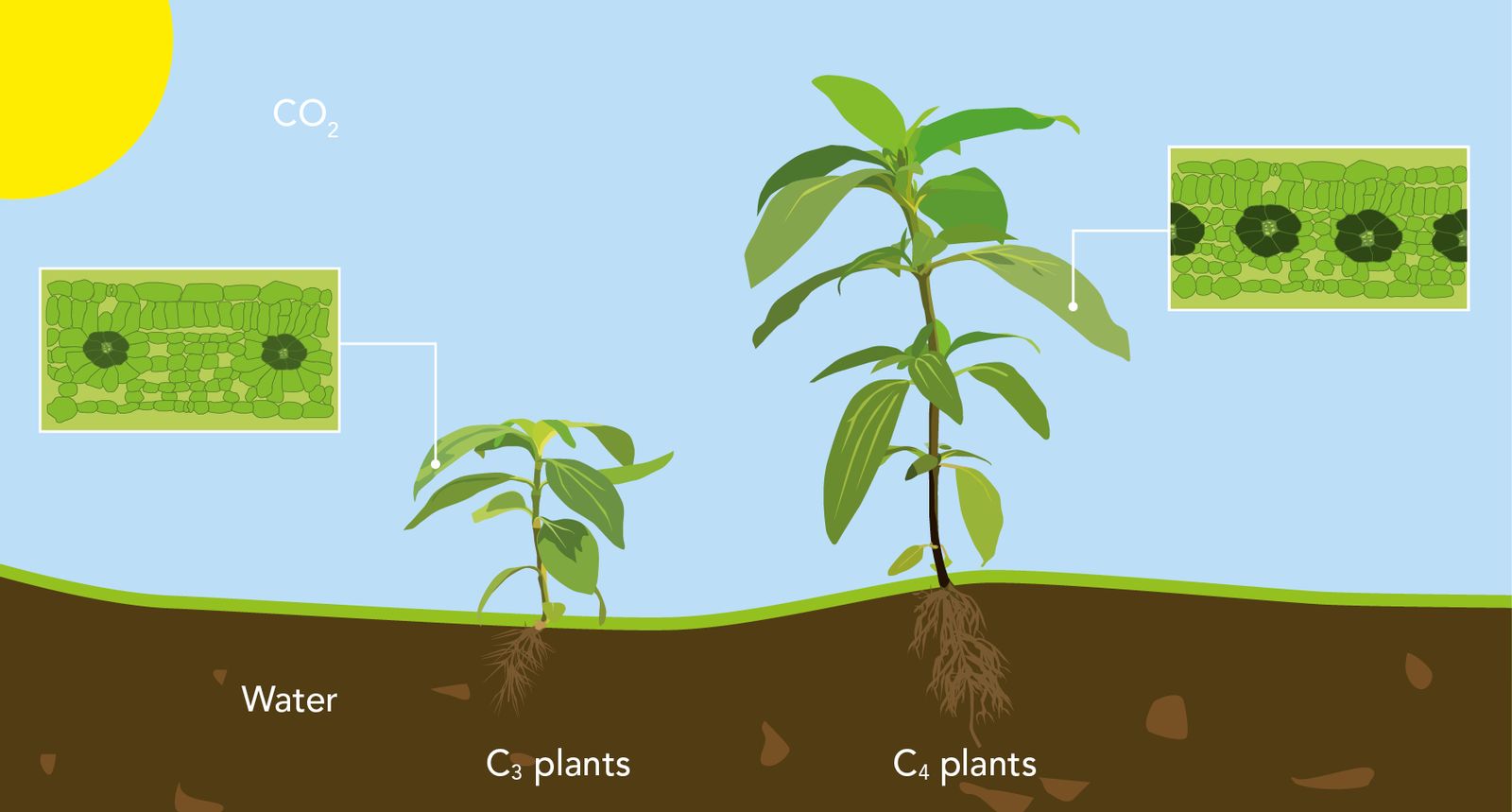Research Area B: C4 Photosynthesis
Decoding function and development of a C4 leaf
C4 photosynthesis has evolved independently over 60 times from C3 photosynthesis in multiple angiosperm plant families within the past 25 million years. This multiple parallel evolution is currently believed to represent an adaptation to low atmospheric CO2 concentrations, drought, and open, high-temperature habitats. The evolution of the C4 photosynthesis trait from that of C3 plants requires the concerted and parallel evolution of morphological and physiological sub-traits, such as the differentiation of photosynthetically active bundle-sheath cells, changes in enzyme biochemistry, and enhanced inter- and intra-cellular metabolite transport.
The aim of researchareaB is to understand the C3/C4 transition in such detail to enable the creation of a synthetic C4 plant from a C3 plant.
To achieve this goal, we will investigate each sub-trait separately and assemble all of them in a subsequent step. Comparative genetic and genomic approaches, using C3 and C4 model systems and natural populations in combination with high-throughput phenotyping under specific selective conditions of different CO2-concentrations will be used to recognise the gene regulatory networks behind. This work will be complemented by quantitative cell biology and biochemistry available in research area. To enable the design of a synthetic C4 trait in a C3 plant we will extract the relevant gene regulatory modules by mathematical modelling and use fitness evaluations for the best combination of sub-trait properties.
Coordinator
Prof. Dr. Peter Westhoff

Institute of Plant Molecular and Developmental Biology
Heinrich Heine University Düsseldorf
